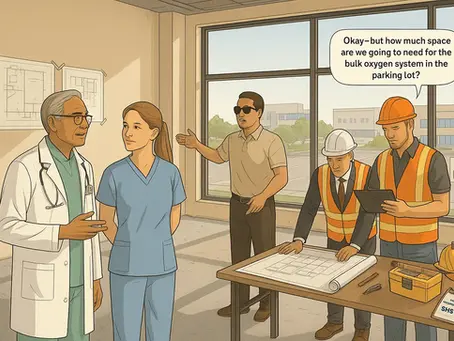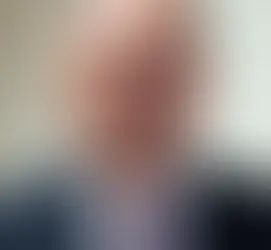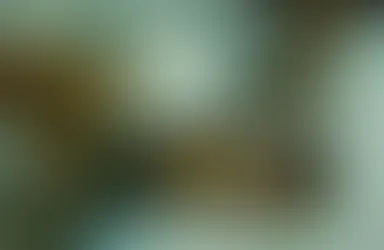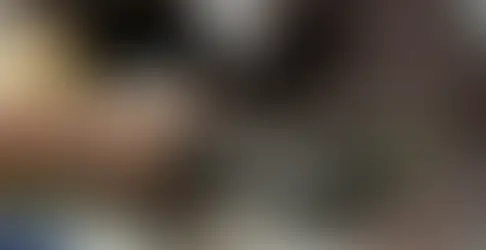top of page
Blog: Blog2

Shared Health Services Blog
Welcome to the Shared Health Services blog—a resource designed for hospitals and physician practices exploring outpatient wound care and hyperbaric medicine. We provide a proven framework, clinical expertise, and personalized support to help you launch and manage successful, branded programs that reflect your identity and meet your community’s needs.
Search


Why Our "CEO to CNA" Content Strategy Won National Healthcare Marketing Awards
Five out of six entries placed across the MarCom Awards, Healthcare Digital Marketing Awards, and Digital Health Awards — including a Platinum for "Compliant Documentation Is Storytelling." These aren't wound care industry awards. They're national creative competitions judged against Fortune 500 companies and major health systems. How did a family-owned wound care partner earn this recognition? By writing for every reader — from CEO to CNA — with clear, accessible, actionable
Dec 16, 20254 min read


Wound Care & HBOT Acronym Reference Guide
Master wound care acronyms with our comprehensive guide covering 350+ terms from DFU and NPWT to CMS billing codes. Transform confusing alphabet soup into strategic communication advantage. Essential reference for healthcare professionals navigating clinical terminology, billing requirements, and compliance frameworks in wound care and hyperbaric medicine.
Sep 15, 202522 min read


What Information is Typically Found on a Hyperbaric Chamber Data Plate?
Every hyperbaric chamber includes a data plate that contains critical safety and compliance details — like manufacturer, model, serial number, pressure rating, and more. This quick guide walks through what’s typically included and why it matters for regulatory audits, documentation, and equipment tracking.
Oct 8, 20242 min read


Peripheral Artery Disease (PAD) Awareness Month: Why Vascular Health Matters for Wound Healing
September is PAD Awareness Month — a time to highlight the critical link between vascular health and wound healing. Peripheral artery disease limits blood flow, delaying recovery and increasing risk of limb loss. This post explores why early detection, referral, and vascular support are key for wound care outcomes.
Sep 12, 20243 min read


Evidence-Based Advanced Wound Care Clinic Coming to Brookfield, Wisconsin
SAAK Health is launching a new evidence-based wound care clinic in Brookfield, WI — bringing advanced treatments and personalized support closer to home. This specialty clinic is designed to serve patients with chronic, non-healing wounds and support local providers through referral coordination and continuity of care.
Aug 21, 20242 min read


Wound Healing Awareness Month
Wound Healing Awareness Month raises visibility for patients living with chronic wounds and the clinicians who care for them. Millions face delayed healing due to conditions like diabetes, PAD, or infection. This post explores the impact of early referral, education, and access to specialized wound care services.
Jun 4, 20242 min read


Limb Loss Awareness Month: Prevent Amputation with Advanced Wound Care
April is Limb Loss Awareness Month — drawing attention to the millions at risk for amputation due to diabetes, PAD, and chronic wounds. With timely intervention and access to advanced wound care, many amputations can be prevented. This post explores what hospitals and providers can do to help preserve limbs and lives.
Apr 8, 20242 min read


How Nutrition Supports Wound Healing | National Nutrition Month Spotlight
Nutrition plays a critical role in wound healing — from tissue repair and immune function to collagen production and inflammation control. This National Nutrition Month, we spotlight how providers and patients can support healing with high-quality, nutrient-dense foods that promote recovery and resilience.
Mar 1, 20243 min read


Finding the Right Wound Care Partner: How SHS Empowers Success
Choosing the right wound care partner can shape your program’s success for years to come. At Shared Health Services, we provide hospitals and physician practices with market-specific data, financial forecasting, and compliance expertise—empowering your team to launch and sustain high-performing wound care and HBOT services.
Jul 26, 20232 min read


Launch a Wound Treatment Center in Your Practice with Shared Health Services
Opening a wound care center inside your practice starts with vision—and the right team. This post explores how Shared Health Services supports private providers from site selection to setup, guiding every step with data-driven tools, clinical insight, and practical advice to launch with confidence.
May 19, 20232 min read


A Vital Service to Under Served Populations
Millions of Americans in rural or underserved areas lack access to advanced wound care and hyperbaric oxygen therapy. Shared Health Services partners with hospitals and clinics in these communities to expand access, close care gaps, and support patients who need specialized treatment close to home.
Nov 4, 20221 min read


WHERE DO WE GO FROM HERE?
Where do we go from here? In this strategic reflection, Terrie A. Dittmeyer, VP of Operations at Shared Health Services, explores the future of wound care—highlighting the critical role of specialized programs, clinical leadership, and innovation in treating complex, non-healing wounds.
Apr 22, 20222 min read


An Interview with LeadersVoiceUSA: CEO of Shared Health Services
In this exclusive interview with LeadersVoiceUSA, David Davis, CEO of Shared Health Services, shares his journey, leadership philosophy, and vision for advancing wound care and hyperbaric medicine. Learn how decades of healthcare experience, strategic insight, and a commitment to doing things differently continue to shape SHS’s national impact.
Jun 28, 20218 min read


The Risk Factors Associated With Diabetes and High Glucose Levels
Diabetes is more than a blood sugar issue — it’s a systemic disease with far-reaching effects. This post explores how unmanaged hyperglycemia contributes to diabetic foot wounds, kidney disease, and heart failure, and why early intervention through specialized wound care programs is essential to preventing irreversible damage.
Jun 9, 20214 min read


What Does Crust Look Like on Wounds?
Crust, often mistaken for eschar, is a common feature in superficial wound healing. This post explains what crust looks like, when it's part of the normal healing process, and how to distinguish it from deeper tissue concerns. Understanding these visual cues helps clinicians choose the right interventions without disrupting progress.
Oct 15, 20202 min read


What Does a Wagner Grade 5 Look Like?
Wagner Grade 5 ulcers represent the most severe stage of diabetic foot wounds, often involving extensive gangrene and full-foot involvement. In this post, we examine what a Grade 5 wound looks like, why immediate intervention is critical, and how advanced therapies like HBOT may support limb salvage when paired with surgical care.
Oct 15, 20202 min read


What does a Wagner Grade 4 Look Like?
Wagner Grade 4 ulcers involve localized gangrene of the forefoot or heel and often signal advanced ischemia and irreversible tissue loss. This post outlines what clinicians look for when diagnosing Grade 4 ulcers and how wound care teams evaluate amputation risk, limb salvage potential, and HBOT as a supportive therapy option.
Oct 15, 20202 min read
bottom of page


